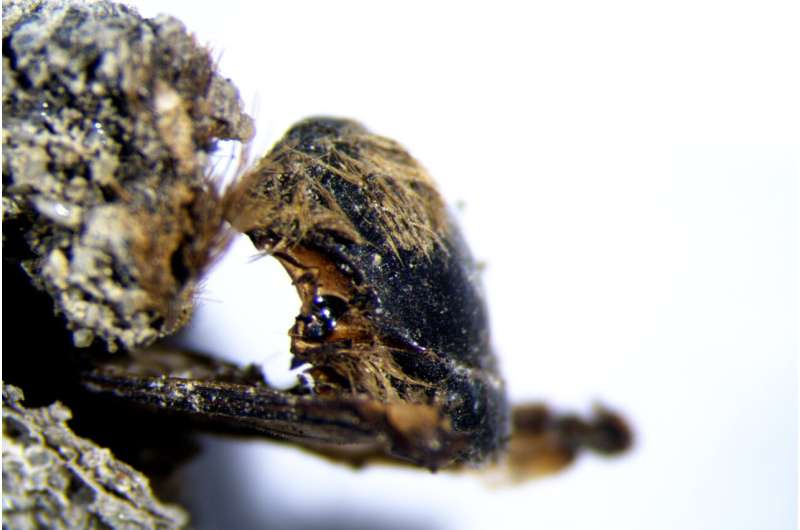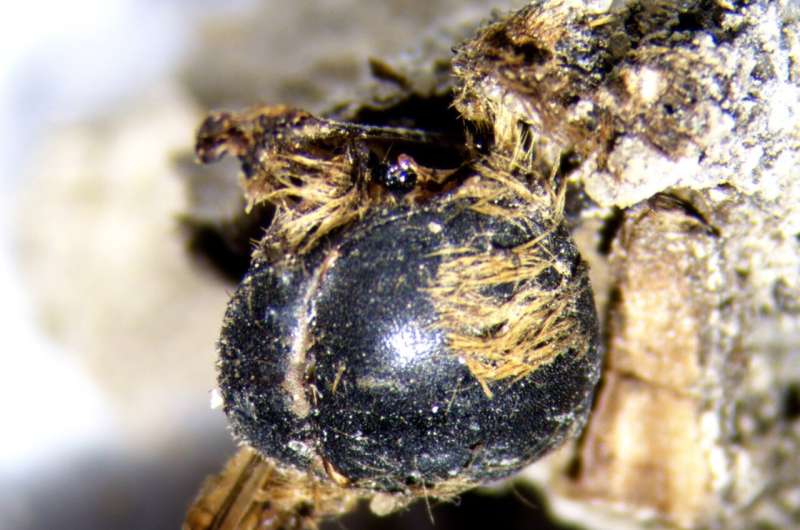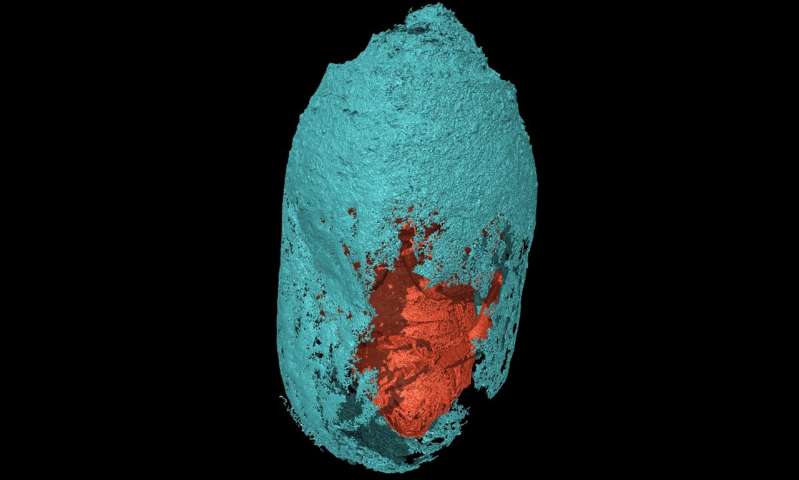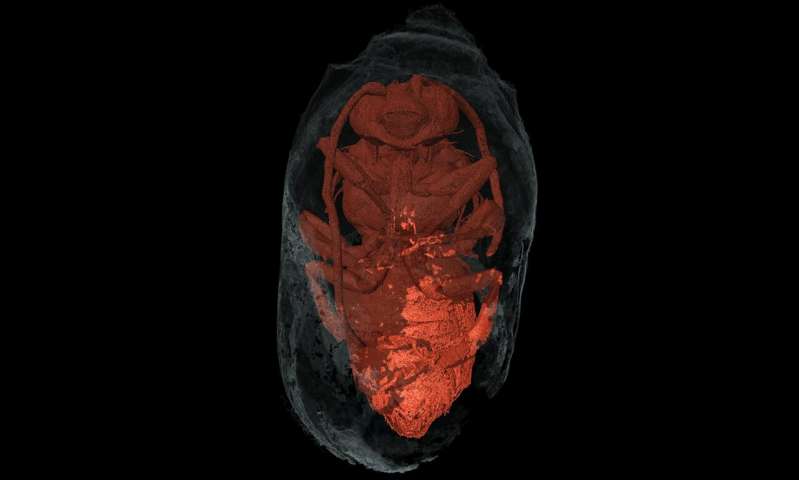This article has been reviewed according to Science X's editorial process and policies. Editors have highlighted the following attributes while ensuring the content's credibility:
fact-checked
trusted source
proofread
Bees from the time of the pharaohs found mummified on the southwest coast of Portugal

A new study reports the discovery of hundreds of mummified bees inside their cocoons. These cocoons, produced almost 3,000 years ago, were discovered in a new paleontological site discovered on the coast of Odemira, in Portugal.
About 2,975 years ago, Pharaoh Siamun reigned in Lower Egypt; in China the Zhou Dynasty elapsed; Solomon was to succeed David on the throne of Israel; in the territory that is now Portugal, the tribes were heading towards the end of the Bronze Age. In particular, on the southwest coast of Portugal, where is now Odemira, something strange and rare had just happened: hundreds of bees died inside their cocoons and were preserved in the smallest anatomical detail.
The cocoons, now discovered, resulted from an extremely rare fossilization method—normally the skeleton of these insects is rapidly decomposed due to its chitinous composition, which is an organic compound.
"The degree of preservation of these bees is so exceptional that we were able to identify not only the anatomical details that determine the type of bee, but also its sex and even the supply of monofloral pollen left by the mother when she built the cocoon," says Carlos Neto de Carvalho, scientific coordinator of Geopark Naturtejo, and collaborating researcher at Instituto Dom Luiz, at the Faculty of Sciences of the University of Lisbon—Ciências ULisboa (Portugal).

The paleontologist says that the project that led to this discovery identified four paleontological sites with a high density of bee cocoon fossils, reaching thousands in a square measuring one meter on a side. These sites were found between Vila Nova de Milfontes and Odeceixe, on the coast of Odemira, a municipality that gave strong support to the execution of this scientific study, allowing its dating by carbon 14.
"With a fossil record of 100 million years of nests and hives attributed to the bee family, the truth is that the fossilization of its user is practically non-existent," says Andrea Baucon, one of the co-authors of the present work, paleontologist at the University of Siena.
The cocoons now discovered, produced almost 3,000 years ago, preserve as in a sarcophagus the young adults of the Eucera bee that never got to see the light of day. This is one of about 700 species of bees that still exist in mainland Portugal today. The newly discovered paleontological site shows the interior of the cocoons coated with an intricate thread produced by the mother and composed of an organic polymer.
Inside, you can sometimes find what's left of the monofloral pollen left by the mother, with which the larva would have fed in the first times of life. The use of microcomputed tomography allows for a perfect and three-dimensional image of the mummified bees inside sealed cocoons.
-

X-ray micro-computed tomography views of a male Eucera bee (ventral) inside a sealed cocoon. View obtained in the ICTP ElettramicroCT, Trieste's Elettra synchrotron radiation facility in Italy.The image shows the architecture of the excavated brood chamber closed by the spiral cap, containing an adult bee close to abandoning the cell. Credit: Federico Bernardini/ICTP. -

X-ray micro-computed tomography views of a male Eucera bee (ventral) inside a sealed cocoon. View obtained in the ICTP ElettramicroCT, Trieste's Elettra synchrotron radiation facility in Italy.The image shows the architecture of the excavated brood chamber closed by the spiral cap, containing an adult bee close to abandoning the cell. Credit: Federico Bernardini/ICTP.
Bees have more than 20,000 existing species worldwide and are important pollinators, whose populations have suffered a significant decrease due to human activities and which has been associated with climate change. Understanding the ecological reasons that led to the death and mummification of bee populations nearly 3,000 years ago could help to understand and establish resilience strategies to climate change.
In the case of the southwest coast, the climatic period that was experienced almost 3,000 years ago was marked, in general, by colder and rainier winters than the current ones.
"A sharp decrease in the nocturnal temperature at the end of winter or a prolonged flooding of the area already outside the rainy season could have led to the death, by cold or asphyxiation, and mummification of hundreds of these small bees," explains Carlos Neto de Carvalho.
The findings are published in the journal Papers in Palaeontology.
This study is the result of an Ibero-Italian cooperation that brought together researchers from Instituto Dom Luiz—Ciências ULisboa, DISTAV—University of Genova (Italy), MARE—University of Coimbra (Portugal), the Polytechnic Institute of Tomar (Portugal), the Portuguese Centre of Geo-History and Prehistory, the Abdus Salam Research Center in Theoretical Physics, University of Siena (Italy), University of Venice (Italy) and University of Seville (Spain).
More information: Carlos Neto de Carvalho et al, Eucera bees (Hymenoptera, Apidae, Eucerini) preserved in their brood cells from late Holocene (middle Neoglacial) palaeosols of southwest Portugal, Papers in Palaeontology (2023). DOI: 10.1002/spp2.1518
Provided by University of Lisbon




















